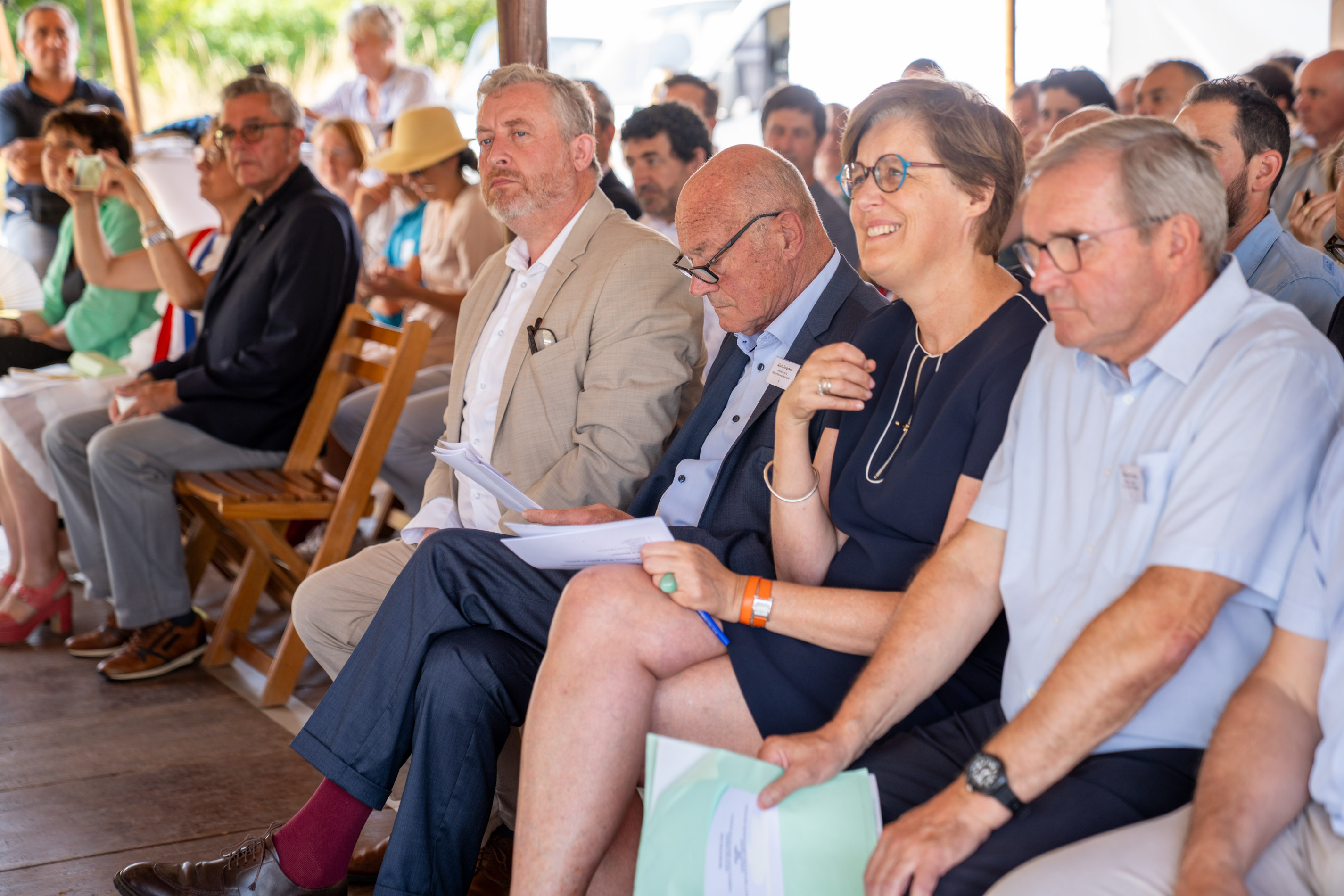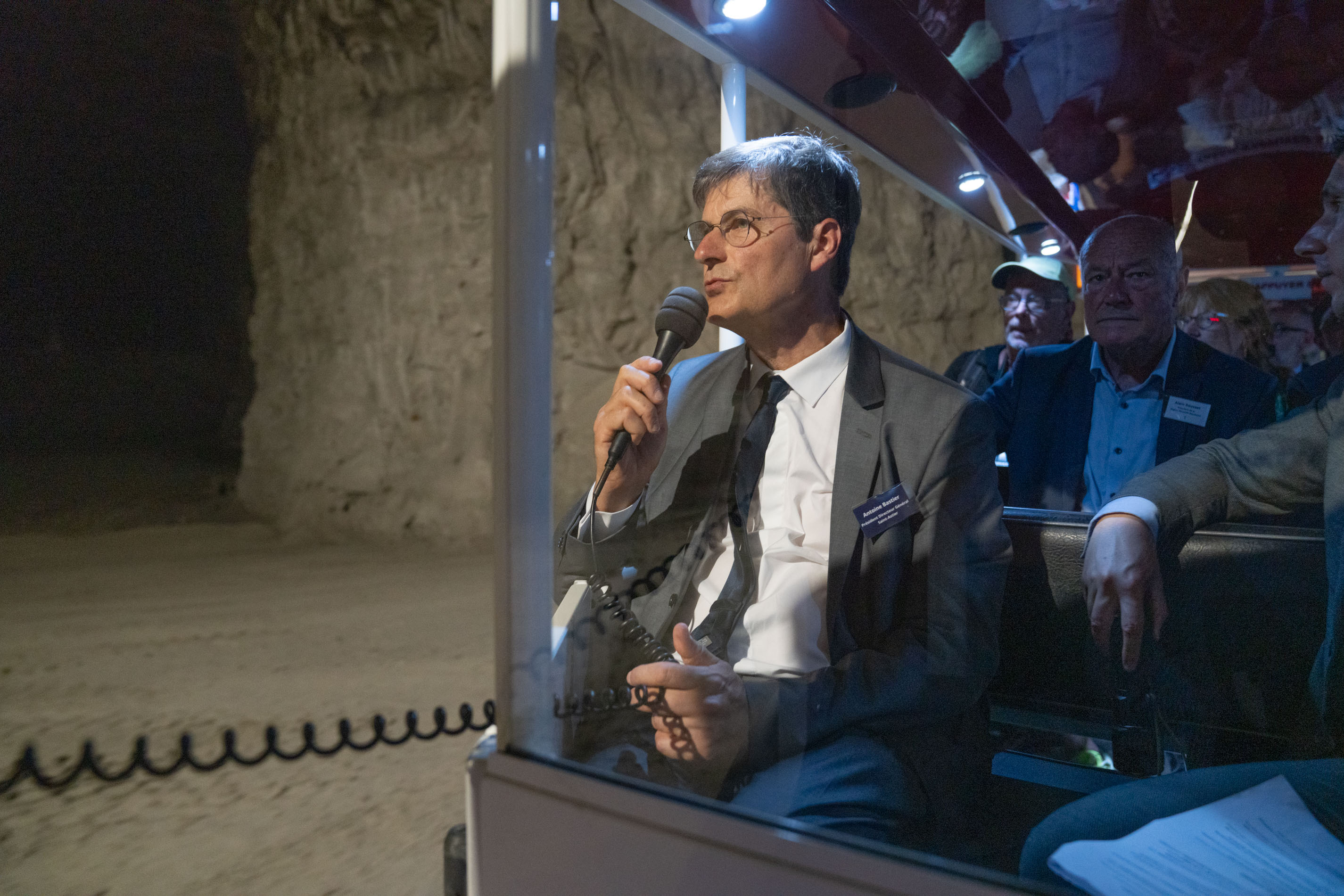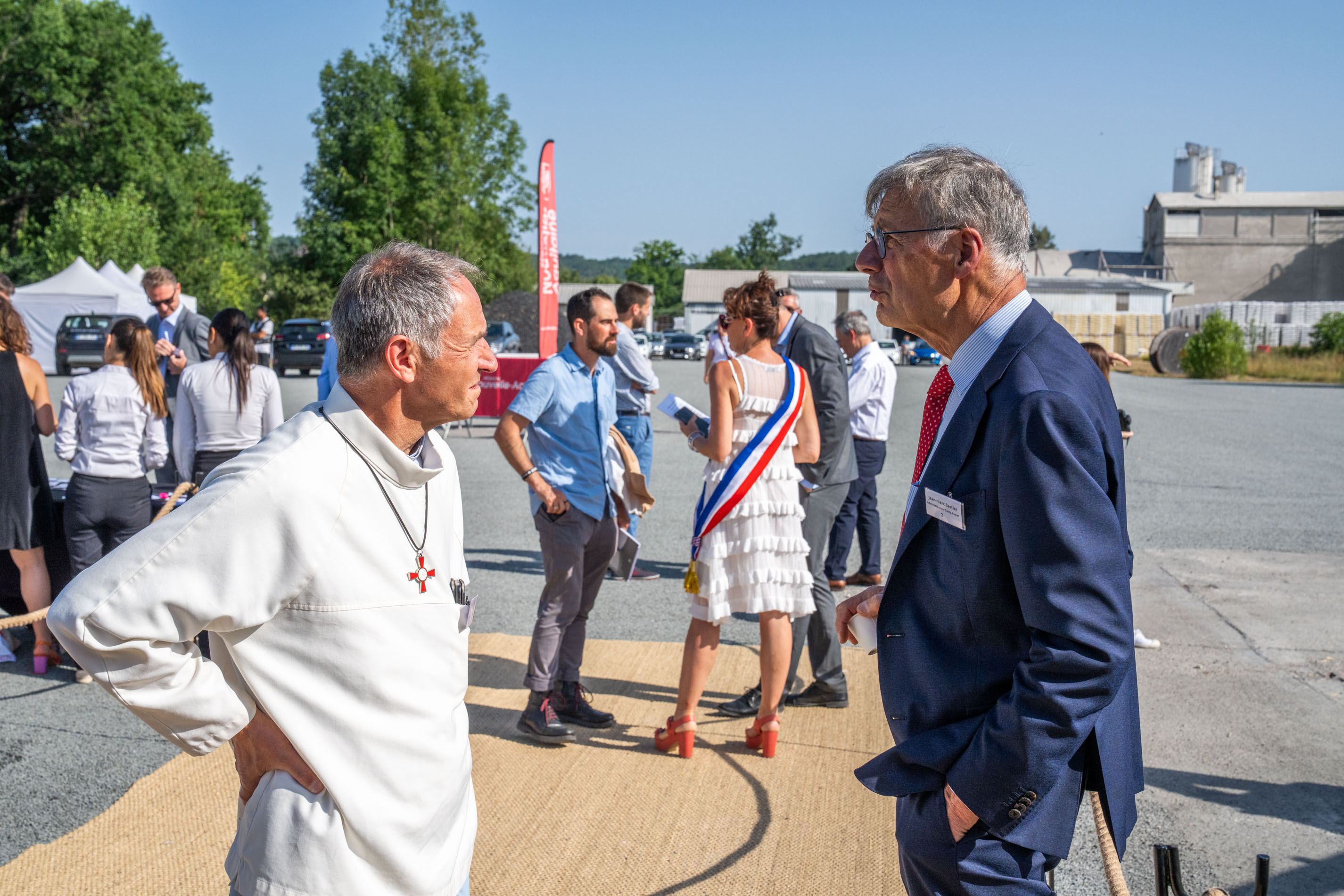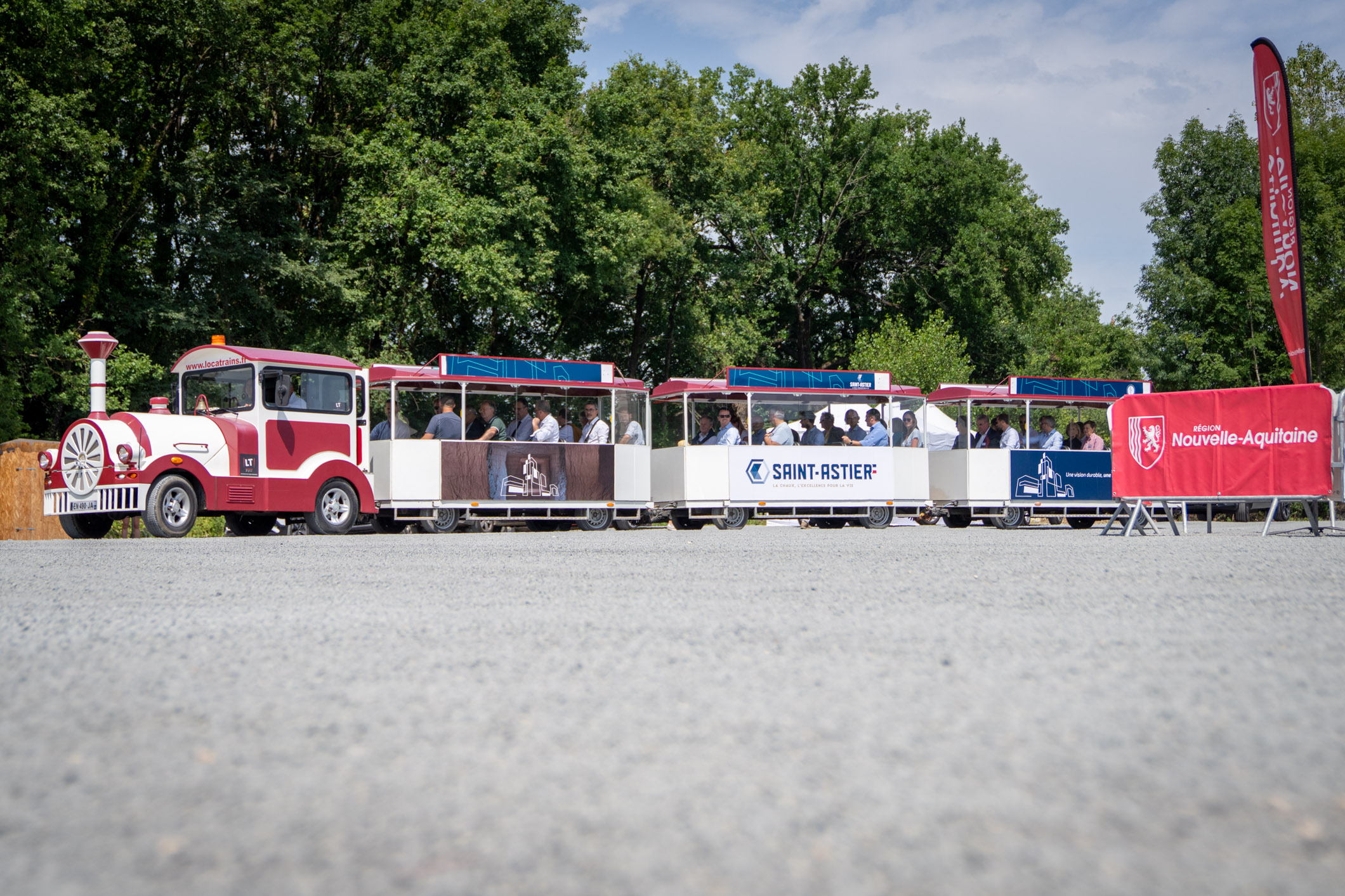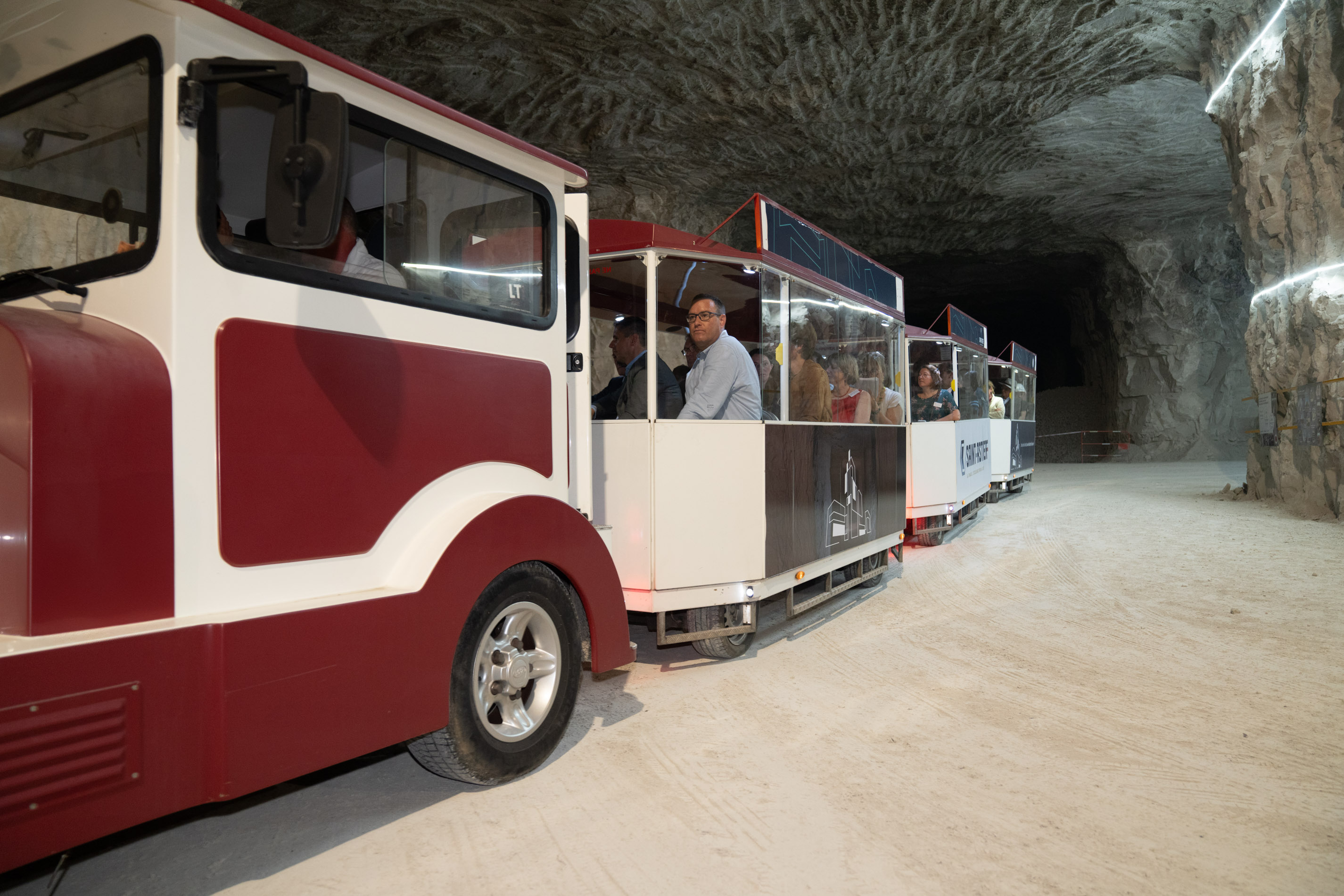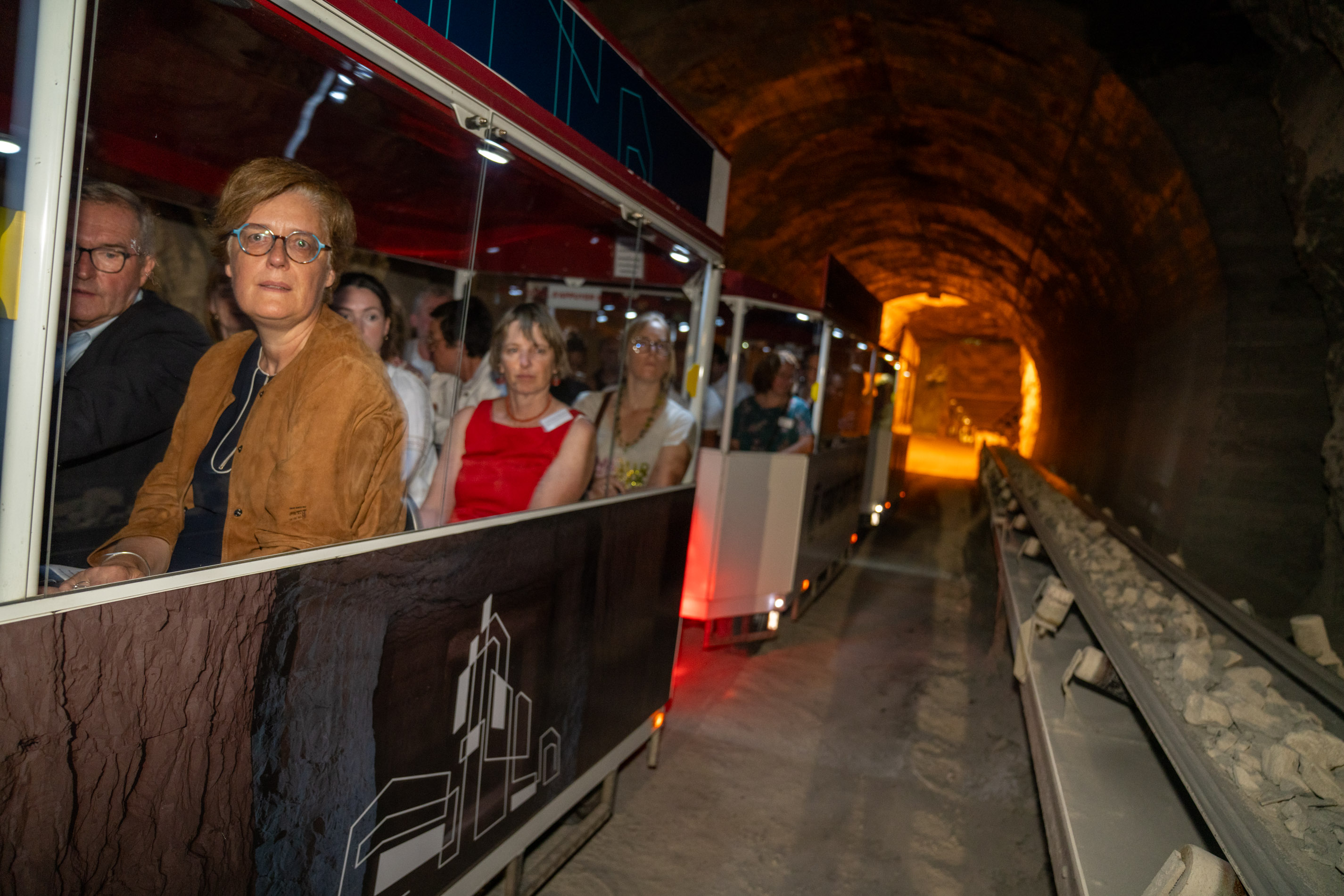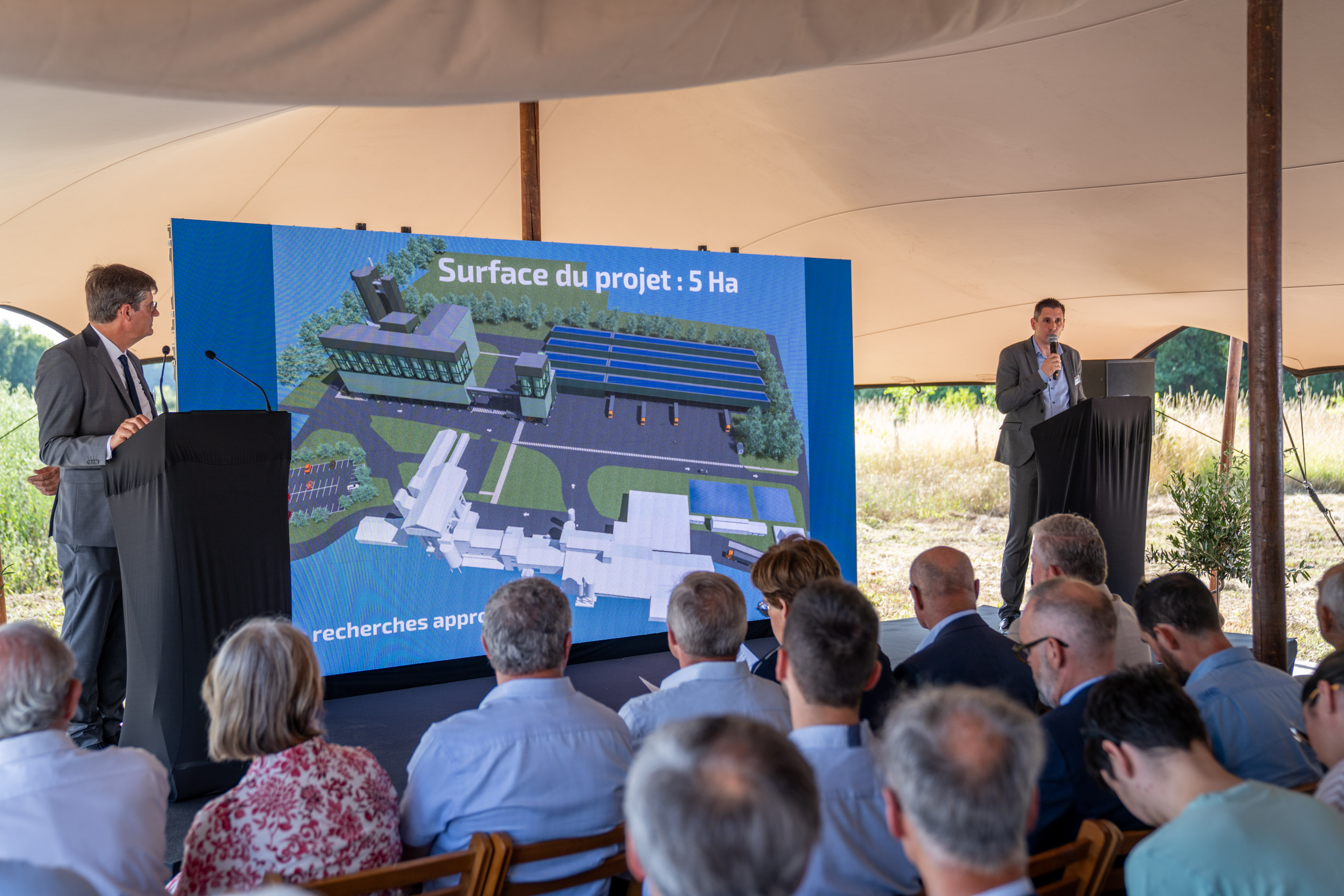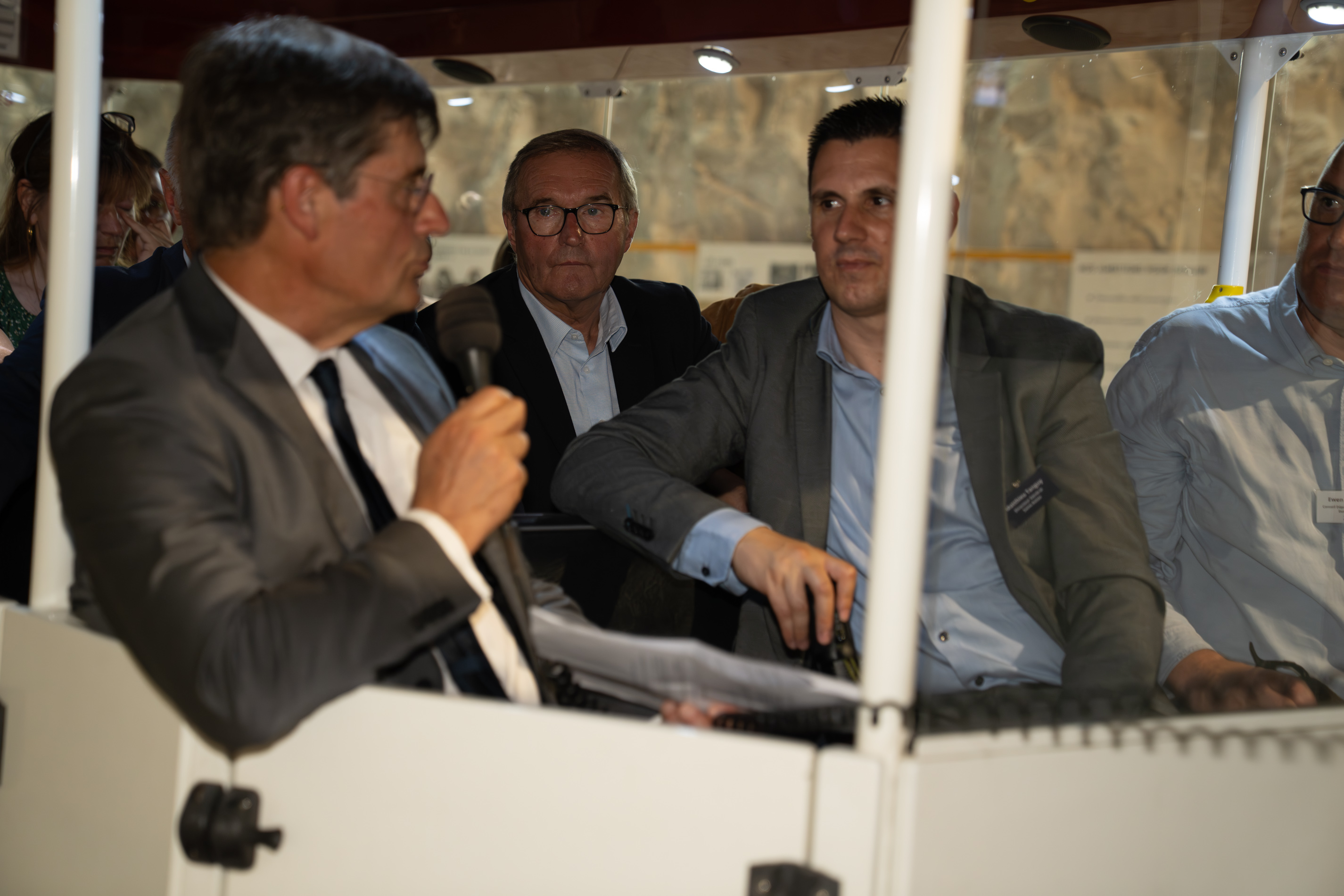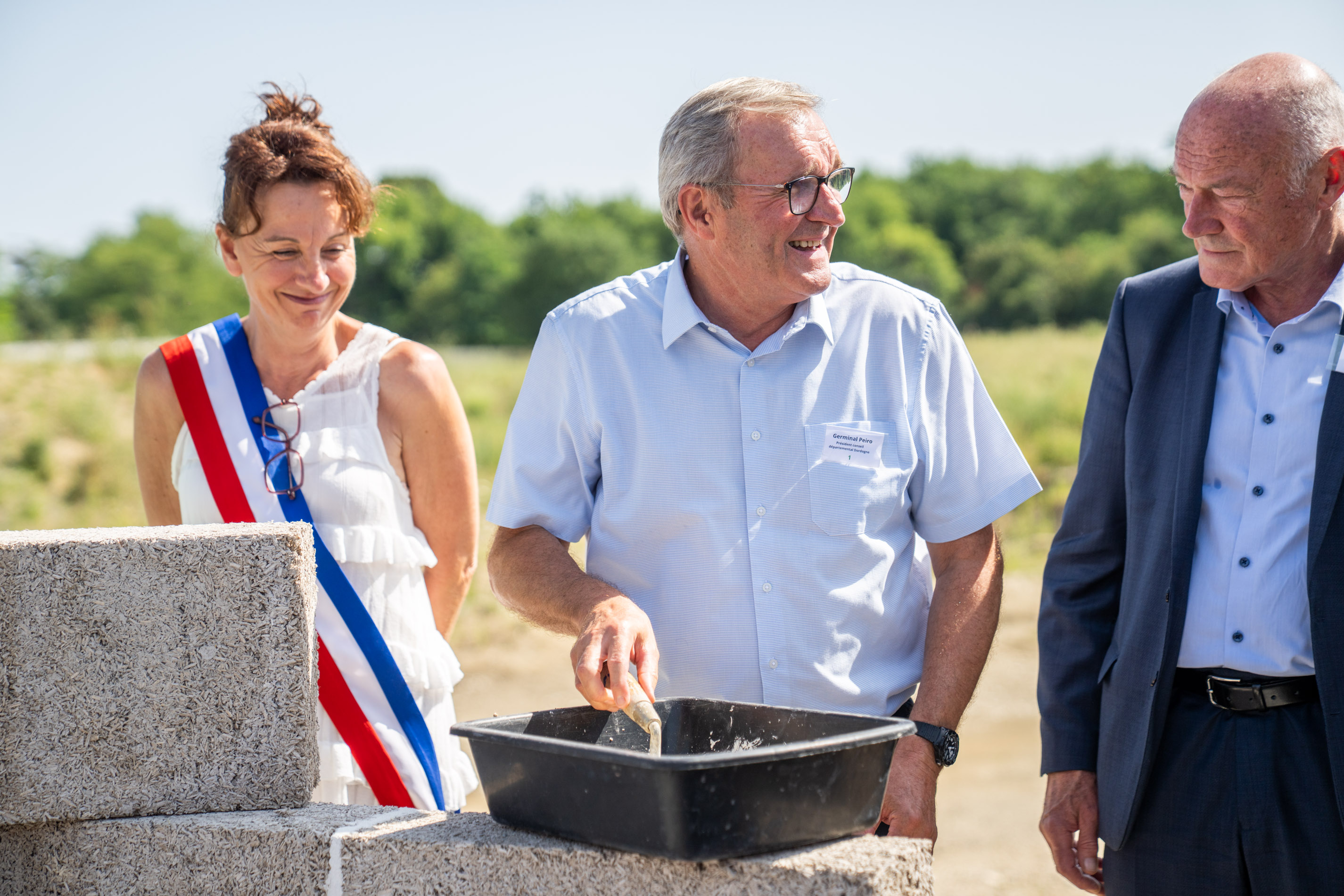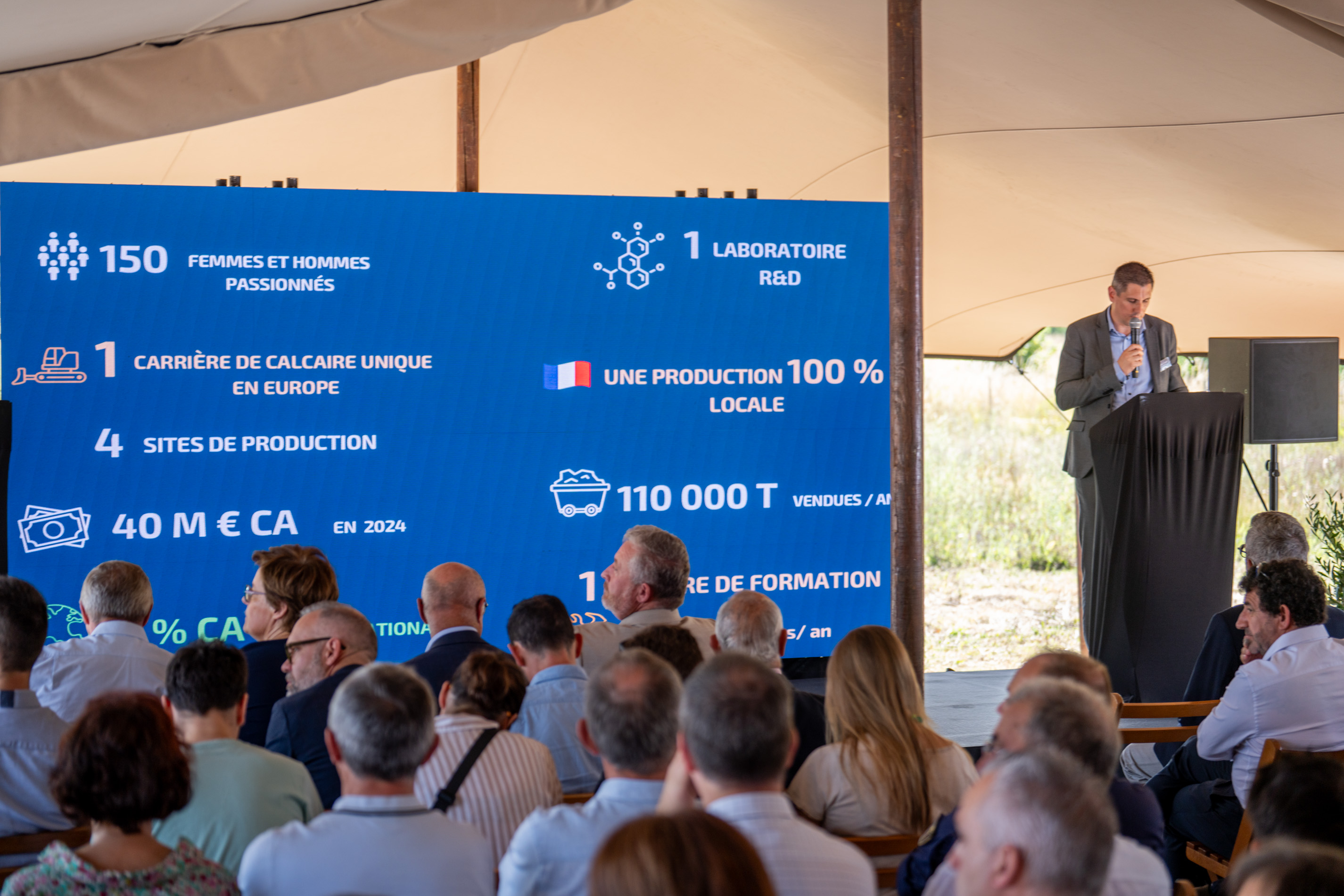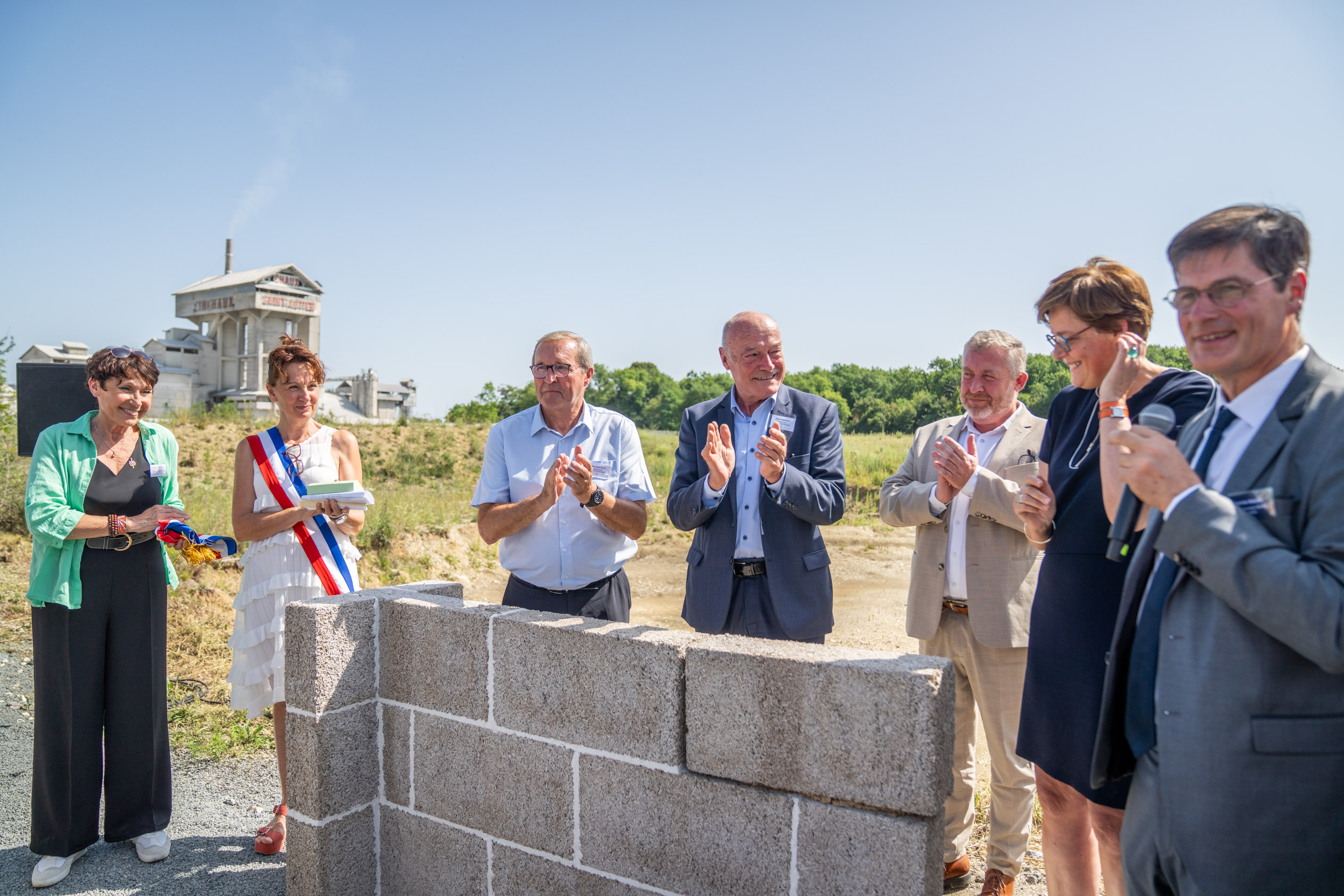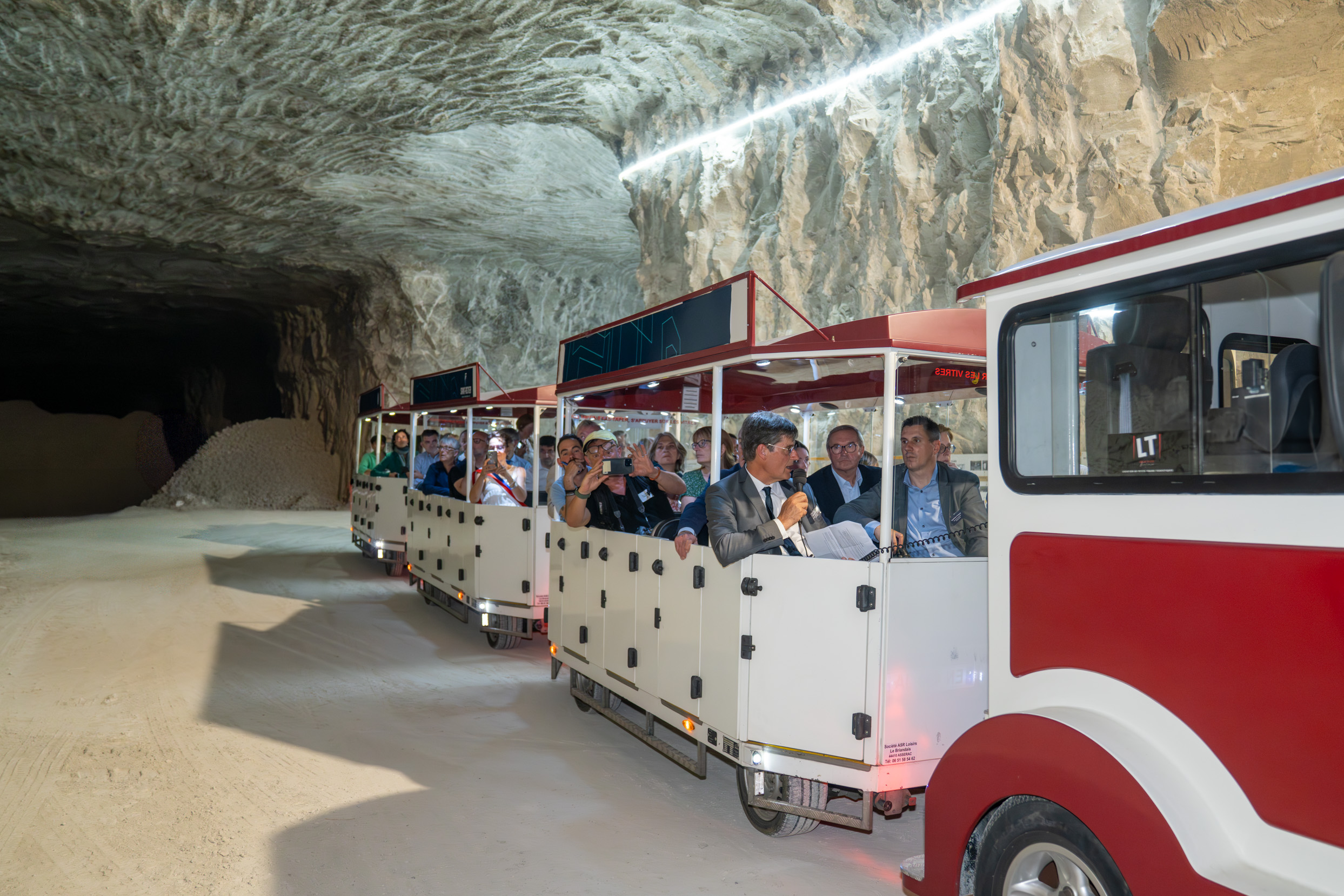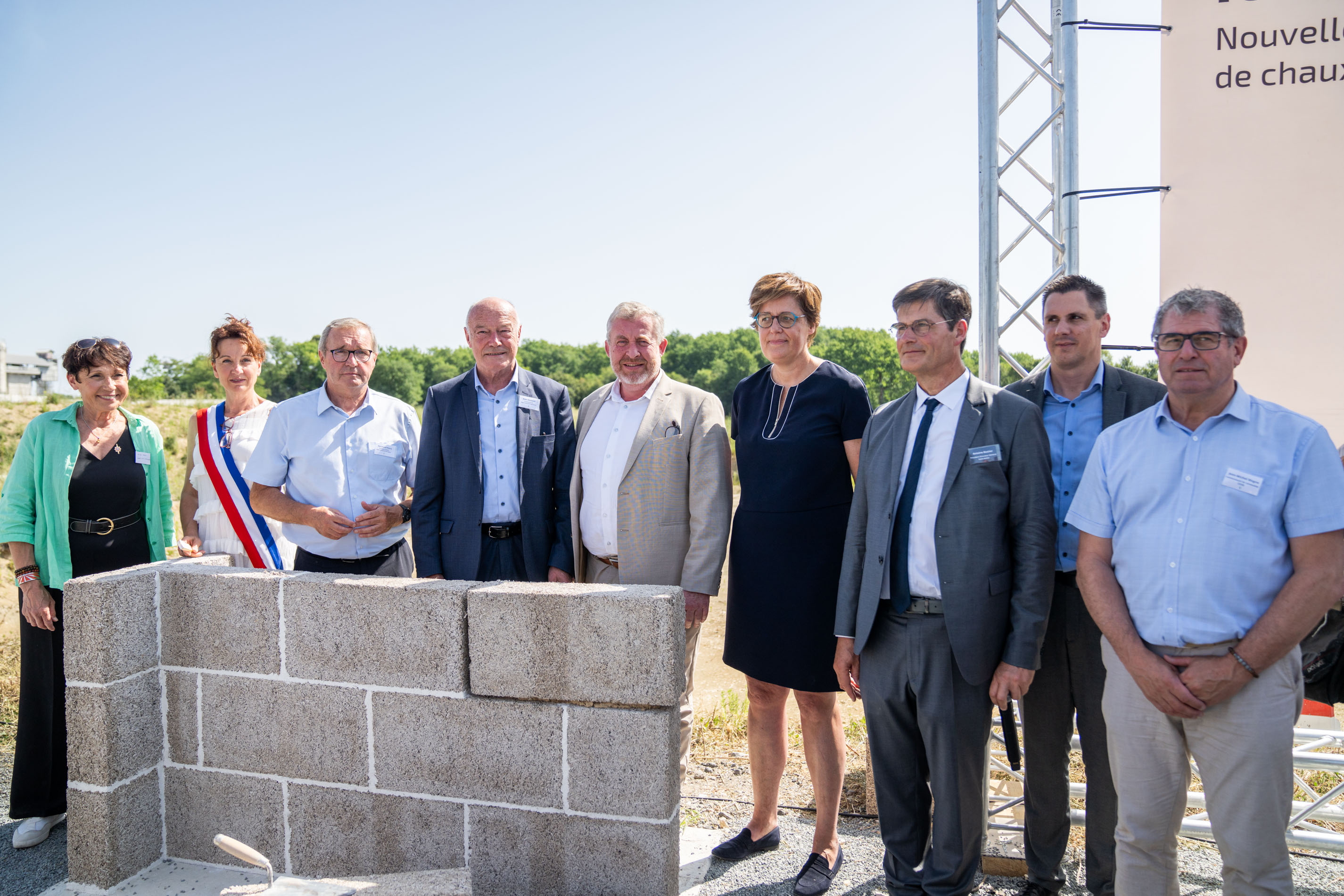
Laying of the foundation stone: Saint-Astier® enters a new industrial era
25 June 2025 will remain a milestone in the history of the family-owned company CHAUX SAINT-ASTIER®. In the presence of numerous elected officials, partners and employees, the foundation stone for the new carbon-neutral production unit was laid at the historic site in Saint-Astier, in the Dordogne region of France. This momentous occasion marks the launch of the largest industrial project ever undertaken by the company since its creation in 1912.
An ambitious project serving the environment and heritage.
With an investment of €40 million, equivalent to its annual turnover, CHAUX SAINT-ASTIER® is embarking on a major overhaul of its industrial tools. The goal is to ensure the long-term future of the business while becoming a model of sustainable industry. This will involve replacing the two existing kilns, which date back to 1930, with a modern, more efficient and environmentally friendly calcination plant.
This unique industrial project, based in the heart of the Dordogne region, will cover 5 hectares and will enable the company :
- To develop product innovation on a larger scale ,
- To reduce our carbon footprint by 25% by 2030,
- To reduce dust emissions by 98%
- To reduce energy consumption on site by 10%
- To create a local ecosystem, with the involvement of more than 80 companies mobilised on this project
A factory focused on the future
The new unit will incorporate cutting-edge technologies:
- A kiln powered by natural gas, then biogas from 2030 onwards.
- An innovative hydration process, tailored to our raw material
- Photovoltaic panels covering nearly 40% of electricity needs
- Recovery of fatal heat and rainwater for reuse in the industrial process
‘This transformation is accompanied by enhanced agility and increased versatility, ensuring our ability to anticipate, adapt and progress in a constantly changing environment…’ Matthieu TANGUY, Managing Director.
A strong commitment to CSR
This project is part of an ambitious CSR initiative, with a climate roadmap aiming to reduce GHG emissions by 45% by 2040. The company has also set up a 99-year Real Environmental Obligation (ORE) with the Conservatoire des Espaces Naturels (CEN) covering 12.3 hectares to guarantee the preservation of biodiversity around the company’s premises.
carousel ceremony laying of the foundation stone SAINT-ASTIER
Local and international impact
With 150 employees, most of whom are based within a 25 km radius, CHAUX SAINT-ASTIER® is strengthening its regional roots while continuing its international development (15% of turnover from exports). It remains a key player in the restoration of world heritage sites, with prestigious references such as Notre-Dame de Paris, the Tower of London and the Trevi Fountain in Rome.
Highlights of the day
The ceremony was attended by important figures from the region who are heavily involved in the rollout of the project:
- Antoine Bastier, CEO of Chaux Saint-Astier®,
- Matthieu Tanguy, Managing Director of Chaux Saint-Astier®,
- Alain Rousset, President of the Nouvelle-Aquitaine Region,
- Marie Aubert, Prefect of the Dordogne,
- Germinal Peiro, President of the Departmental Council,
- Élisabeth Marty, Mayor of Saint-Astier,
- ADEME / BPI France/ Medef Périgord / Project financiers
All emphasised the importance of this project for the industrial and ecological future of the region.
An immersion into the heart of underground heritage.
On this exceptional day, guests also had the privilege of discovering the underground quarry at Saint-Astier® aboard a small train specially provided for the event. This immersion nearly 20 metres underground provided a better understanding of the origins of our unique expertise, through the unique limestone that the company has been mining for over a century. Guided through this veritable stone cathedral, visitors were able to admire the extraction galleries, discover the secrets of natural hydraulic lime production and appreciate the importance of sustainable management of the deposit, which has been carefully exploited since 1912. A rare and valuable experience at the crossroads of history, geology and craftsmanship.



